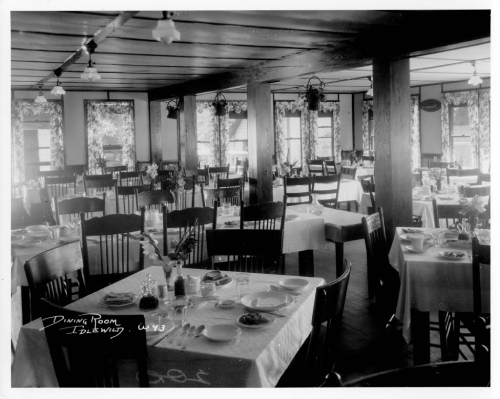
1965 Carver Bank Calendar
Carver Federal Savings and Loan Association, The Civil Rights Calendar, 1965. Black-owned. Collection of Arthur L . Field

Wedding Day Photograph
(Wedding Day), Harlem, New York, 1962-1963.
Jan Yoors. Collection of the Smithsonian National Museum of African American History and Culture, Courtesy of Yoors Family and L. Parker Stephenson Gallery, (c) Jan Yoors.

Smalls Paradise Photograph
A small party of people at Small's Paradise in Harlem, after 1925.
Leslie E. Bigham. Collection of the Smithsonian National Museum of African American History and Culture.

Hotel Theresa Photo
Hotel Theresa, Seventh Ave. & 125th Street, 1915. Byron Company. The Museum of the City of New York. X2010.11.5170.

Copacabana Menu
Copacabana menu, 1930–60s. Collection of Arthur L. Field.

Algonquin menu
Hotel Algonquin Dinner Menu, Wednesday, June 10, 1959. Collection of Arthur L. Field.

Hotel Yorktowne Postcard
The Yorktowne Hotel opened in York, Pennsylvania, in 1925. The opulent Renaissance revival-style building was 11-stories tall, had over 400 windows, and 20-ft.-high ceilings. It was listed in the Green Book in the 1957–64 and 1966–67 editions, and served celebrities such as Jack Dempsey, Cab Calloway, Tony Bennett, Glen Miller, Count Basie, Lucille Ball, and Harry Belafonte.
[Hotel Yorktowne, York, Pa.], ca. 1930-1945. The Tichnor Brothers Collection, Boston Public Library.

Rockefeller Brochure
[Brochure for Rockefeller Center]. Collection of Arthur L. Field.
Click on the images to learn more information




















